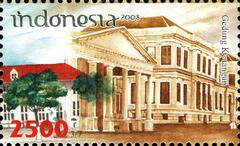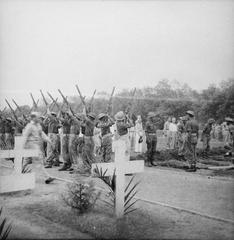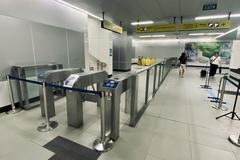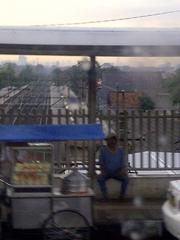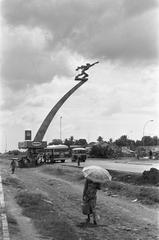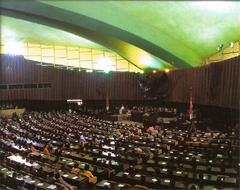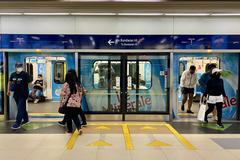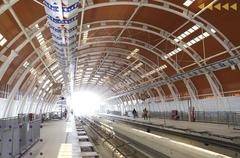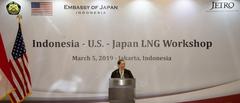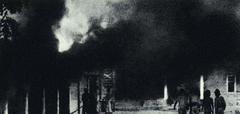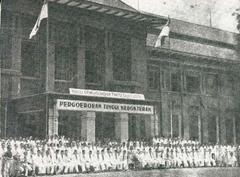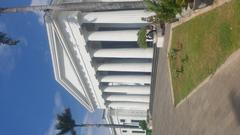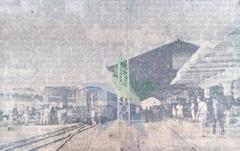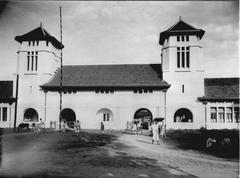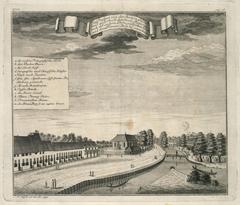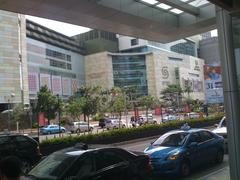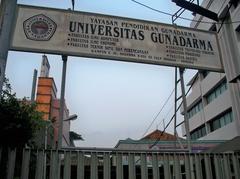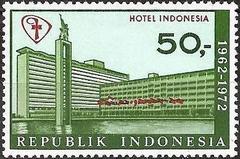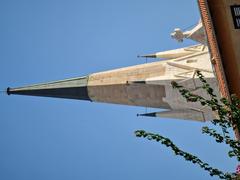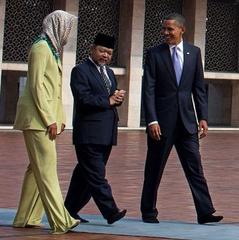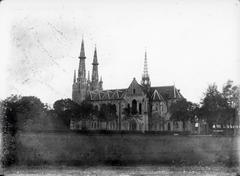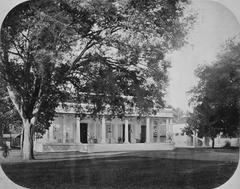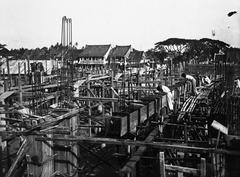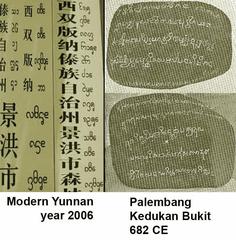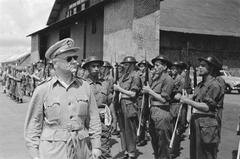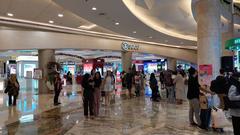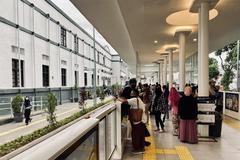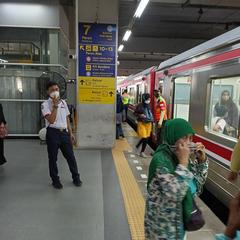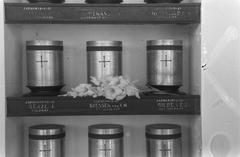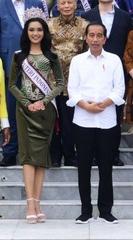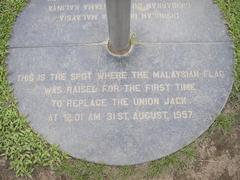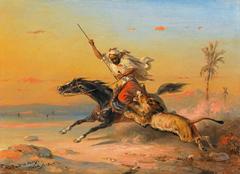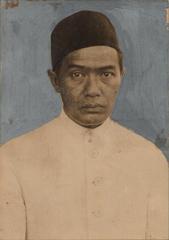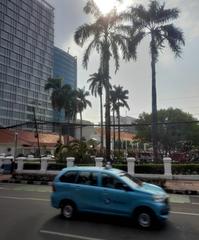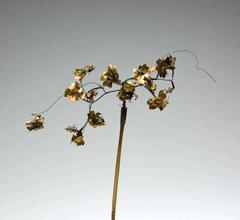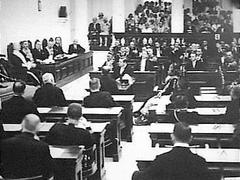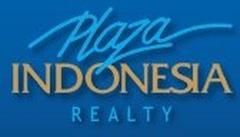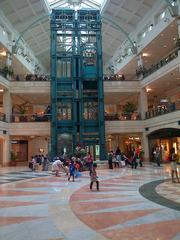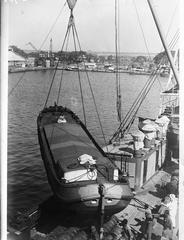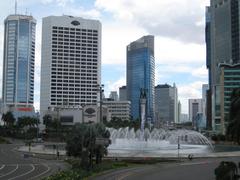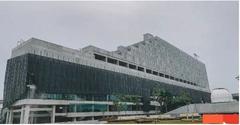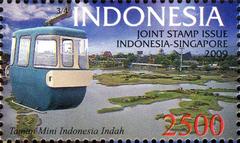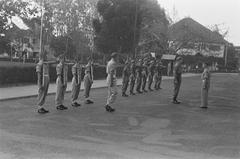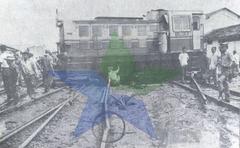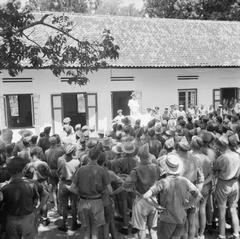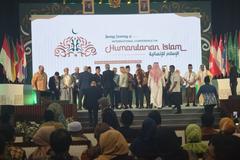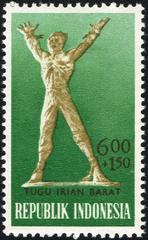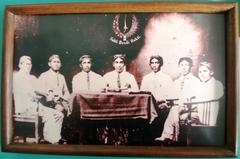Basoeki Abdullah Museum: Visiting Hours, Tickets, and Jakarta Historical Sites Guide
Date: 04/07/2025
Introduction
The Basoeki Abdullah Museum, nestled in the leafy neighborhood of Cilandak Barat, South Jakarta, stands as a testament to Indonesia’s rich artistic and cultural history. Dedicated to the life and work of Basoeki Abdullah—one of the country’s most celebrated painters—the museum offers visitors a unique opportunity to explore the intersection of art, history, and national identity. With its compelling collections, educational programs, and accessible location, the museum is a must-visit for art enthusiasts, history buffs, and travelers keen to discover Jakarta’s historical sites.
Table of Contents
- Introduction
- About Basoeki Abdullah: Life and Artistic Journey
- Museum Origins and Historical Significance
- Highlights of the Collection
- Visiting Hours, Tickets, and Location
- Accessibility and Visitor Facilities
- Cultural and Educational Programs
- Integration with Jakarta’s Cultural Landscape
- Visitor Tips and Frequently Asked Questions
- Nearby Attractions and Suggested Itineraries
- Conclusion
- References
About Basoeki Abdullah: Life and Artistic Journey
Born in 1915 in Surakarta, Central Java, Basoeki Abdullah was immersed in art from an early age. The grandson of Dr. Wahidin Sudirohusodo—a figure of Indonesia’s National Awakening—and son of painter Abdullah Soerjosoebroto, Basoeki’s artistic heritage was both broad and deep (The Jakarta Post). He studied at the Academie voor Beeldende Kunsten in The Hague, Netherlands, and further honed his skills in Paris. Abdullah’s works are distinguished by a masterful blend of Western realism and naturalism with Javanese mythology and local themes.
His prolific career included evocative landscapes, portraits of national and international leaders, and imaginative depictions of Indonesian folklore. Abdullah’s technical skill and sensitivity made his art both aesthetically pleasing and historically significant, with pieces collected by Presidents Sukarno and Soeharto, as well as international dignitaries.
Tragically, Basoeki Abdullah’s life ended in 1993 when he was murdered in his own home during a robbery (The Jakarta Post). His legacy lives on through the museum, which houses his diverse body of work and personal artifacts.
Museum Origins and Historical Significance
The Basoeki Abdullah Museum originated as the artist’s private residence. Upon his death, Abdullah bequeathed his home and the bulk of his collection to the Indonesian government with the intent of sharing his legacy with future generations (Museum Basoeki Abdullah). The house was officially transferred to the Directorate General of Culture in 1998 and, after extensive renovations, opened to the public in 2001.
Today, the museum serves as both a repository for Basoeki Abdullah’s art and a center for cultural exchange, research, and education. Its establishment reflects the artist’s dedication to nurturing Indonesian culture and supports the preservation of Indonesia’s visual art heritage.
Highlights of the Collection
Paintings and Artistic Works
The museum boasts over 100 original paintings and several reproductions by Basoeki Abdullah, encompassing landscapes, portraits, and mythological themes (Museum Basoeki Abdullah). Notable works include:
- Portrait of Ibu Tien Soeharto: A nuanced depiction of Indonesia’s former first lady.
- Portrait of Pratiwi Sudharmono: Realist representation of a prominent Indonesian woman.
- Batu-Batu Sejarah: Celebrations of Indonesia’s natural and historical heritage.
- Tari Sulawesi: Artistic renditions of traditional dance.
Personal Artifacts and Memorabilia
Beyond paintings, the museum houses around 720 personal items, including:
- Traditional clothing and textiles
- Wayang puppets and masks
- Traditional weapons (keris, swords)
- Statues, jewelry, and dolls
- Basoeki Abdullah’s personal painting tools and daily items
These artifacts offer insight into the artist’s daily life and interests and reflect Indonesia’s cultural diversity (Kompas.com).
Private Library
A highlight for researchers and art lovers, the museum’s library contains about 3,000 books and magazines, many of which belonged to Basoeki Abdullah himself. The library is open to the public and supports both scholarly research and general curiosity (Museum Basoeki Abdullah).
Special Exhibits
The museum regularly rotates thematic exhibitions featuring guest artists, competition winners, and visitor submissions, ensuring a dynamic and evolving experience for repeat visitors (Travelspromo).
Visiting Hours, Tickets, and Location
- Opening Hours: Tuesday to Sunday, 09:00–16:00. Closed on Mondays and national holidays.
- Ticket Prices: As of July 2025, general admission is IDR 10,000 for adults and IDR 5,000 for students/children. Children under 5 enter free. Group discounts available with advance booking (Museum Basoeki Abdullah).
- Location: Jl. Keuangan Raya No. 19, Cilandak Barat, South Jakarta 12430, Indonesia.
How to Get There
The museum is accessible by taxi, ride-hailing apps, or TransJakarta bus (nearest stop: Cilandak). For those driving, on-site parking is available. The neighborhood is safe and features local cafés and eateries for visitors to enjoy before or after their museum experience.
Accessibility and Visitor Facilities
- Physical Accessibility: The ground floor is fully accessible with ramps and wide corridors. The upper floor, hosting temporary exhibits and the library, is accessible only by stairs.
- Restrooms: Clean restrooms are available on the ground floor.
- Prayer Room (Mushola): Provided for Muslim visitors.
- Café: On-site café offers light refreshments, coffee, and Indonesian snacks overlooking a tranquil garden.
- Museum Shop: Sells art-themed souvenirs, books, and prints.
- Wi-Fi: Complimentary throughout the museum.
- Guided Tours: Complimentary Bahasa Indonesia tours are available daily; English tours can be arranged for groups of five or more with advance notice.
Cultural and Educational Programs
The Basoeki Abdullah Museum actively engages the public through:
- Workshops and Seminars: Cover painting techniques, art history, and cultural heritage.
- Art Competitions: Encourage participation from students and young artists.
- Temporary Exhibitions: Feature contemporary Indonesian artists and new research.
- Library Access: Supports education and research for all visitors (Kompas.com).
These initiatives ensure the museum remains a vibrant hub for learning and cultural exchange.
Integration with Jakarta’s Cultural Landscape
Situated in South Jakarta, the Basoeki Abdullah Museum is part of a larger network of museums and cultural sites, such as the National Museum, Taman Mini Indonesia Indah, Museum Layang-Layang Indonesia, and the Wayang Museum (ibnbattutatravel.com). Its presence enriches Jakarta’s dynamic arts scene and offers visitors opportunities for broader cultural exploration.
Visitor Tips and Frequently Asked Questions
Tips for an Enjoyable Visit
- Best Time to Visit: Weekday mornings (09:00–11:00) are quieter.
- Allow Time: Plan for 1.5–2 hours to fully appreciate the exhibits.
- Payment: Bring cash as not all vendors accept cards (Kompas.com).
- Dress Code: Modest, comfortable attire is recommended.
- Photography: Allowed in most areas without flash or tripod; follow staff instructions and signage.
Frequently Asked Questions
Q: What are the museum’s opening hours?
A: Tuesday to Sunday, 09:00–16:00; closed Mondays and national holidays.
Q: How much is the entrance fee?
A: IDR 10,000 for adults, IDR 5,000 for students/children, free for children under 5.
Q: Is the museum wheelchair accessible?
A: The ground floor is accessible; the upper floor is only reachable by stairs.
Q: Are guided tours available?
A: Yes, complimentary tours in Bahasa Indonesia daily; English tours for groups by request.
Q: Can I take photos inside the museum?
A: Photography is allowed in designated areas without flash or tripods.
Q: Does the museum have a café and shop?
A: Yes, both are available on-site.
Nearby Attractions and Suggested Itineraries
Enhance your visit by exploring neighboring attractions:
- Museum Layang-Layang Indonesia (Kite Museum): Offers a deep dive into Indonesia’s traditional kite-making culture (Museum Layang-Layang Indonesia).
- Ragunan Zoo: Family-friendly and just a short drive away.
- Pondok Indah Mall: Ideal for shopping or dining after your museum tour.
- Jakarta History Museum and Wayang Museum in Kota Tua: For those interested in colonial history and traditional puppetry (Jakarta History Museum).
Suggested Half-Day Itinerary:
- Morning at Basoeki Abdullah Museum
- Coffee break at a local café
- Afternoon at Museum Layang-Layang Indonesia or nearby mall
Conclusion
The Basoeki Abdullah Museum stands as a beacon of Indonesia’s cultural and artistic legacy. Its extensive collection of paintings, personal artifacts, and educational resources provides a comprehensive perspective on Basoeki Abdullah’s profound influence on Indonesian art and identity. The museum’s commitment to public engagement, accessibility, and cultural preservation makes it an essential destination for anyone exploring Jakarta’s historical sites.
Plan your visit today by checking the latest information on the official museum website and follow their social media channels for event updates and virtual experiences. Download the Audiala app to discover more cultural destinations and receive personalized recommendations for your Jakarta art journey.
References
- Museum Basoeki Abdullah
- The Jakarta Post
- Kompas.com
- ibnbattutatravel.com
- Travelspromo
- Museum Layang-Layang Indonesia
- Jakarta History Museum
